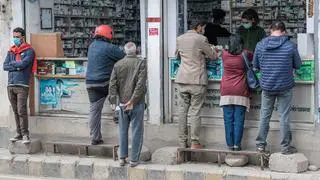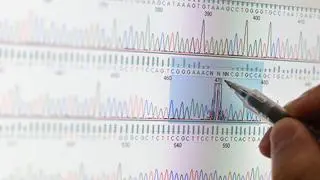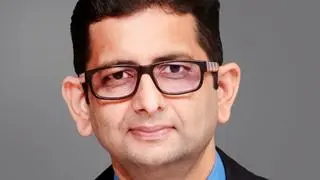Earlier this month, Union Health Minister Harsh Vardhan chaired a high-level review meeting on non-communicable diseases. Also on the agenda was the reformulation of the national policy for treatment of rare diseases, which has been in abeyance since last year. An estimated 72-96 million Indians are affected by rare diseases. These millions have largely been invisible in policy-making and implementation.
Rare diseases are chronic illnesses that rob patients of their health and, in many cases, their lives. India has not arrived at an official consensus on the definition of a rare disease, but for others, such as the European Union, a disease is rare if it affects fewer than 5 in 10,000 people. About 80 per cent cases are genetic and half occur in childhood. However, rare diseases can strike at any point in a person’s lifetime, leaving them with crushing health worries, disability, and often exorbitant medical bills from mostly incurable conditions.
Rare diseases demand a comprehensive policy response, which India has been weak in offering. And a critical reason for that is funding.
Paucity of funds
The Centre provides financial assistance through the Rashtriya Arogya Nidhi (RAN) for patients below the poverty line. As part of the scheme, treatment and care for identified diseases can be accessed, but for the major part at 14 super-specialised hospitals concentrated in our top cities.
Now, consider this: a new drug developed for spinal muscular atrophy for children under 2 years of age (which causes progressive muscle weakness and can lead to death) approved by the United States Food and Drug Administration is set to cost upwards of $2 million. Medication available to Indians can also run into lakhs of rupees for particular diseases.
However, the sum utilised as part of RAN in financial year 2017-2018 was a little over ₹43 crore for a range of illnesses that also cover a handful of rare diseases in the tally of 450 illnesses recorded in the country.
Financial assistance as part of RAN is given as ‘one-time grants’, while rare illnesses require sustained medical attention. Health is a State subject but, as with the Union government, allocations for rare diseases by State governments seem low. Karnataka and Tamil Nadu have offered treatments for individual cases, and patient advocacy through courts has had a role to play in this.
Lack of infrastructure
There are more than 6,000 known rare diseases world over, and even in advanced countries such as the US, it can take an estimated seven years for a patient to be diagnosed with a rare disease. In the Indian context, lack of public infrastructure and trained staff limits proper diagnosis and reporting of cases. A simple question that stares us in the face is, are we doing enough to save lives by ensuring patients have what they need to survive and thrive?
Rare diseases are a matter of public health and people with such illnesses have not been given their due in policy creation and implementation. The current government has included rare diseases in its plan of action. With the upcoming Budget session, now is the chance to make good on its promise.
The writer hosts a podcast on
rare diseases and policy titled
“1 in 20,000” on Suno India








Comments
Comments have to be in English, and in full sentences. They cannot be abusive or personal. Please abide by our community guidelines for posting your comments.
We have migrated to a new commenting platform. If you are already a registered user of TheHindu Businessline and logged in, you may continue to engage with our articles. If you do not have an account please register and login to post comments. Users can access their older comments by logging into their accounts on Vuukle.